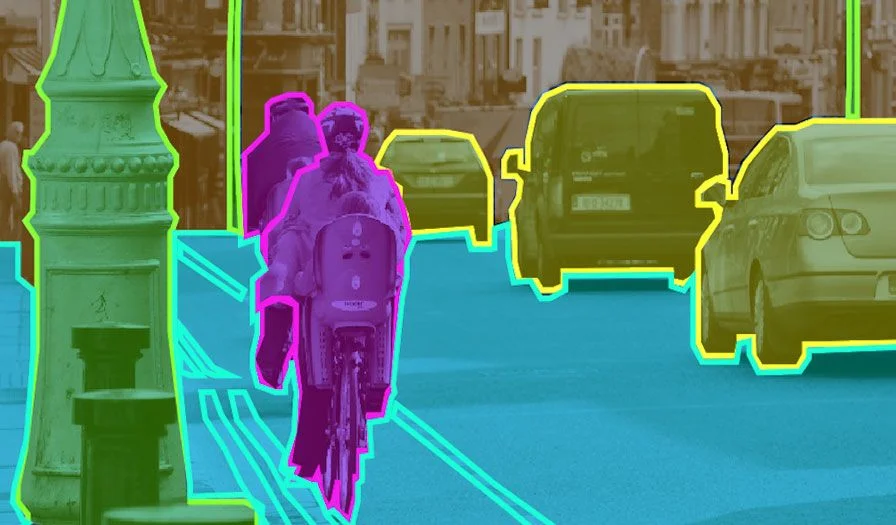Segmentation involves dividing images into distinct regions based on shared characteristics. Unlike image classification that classifies the entire image into predefined categories, segmentation provides pixel-level annotations, outlining the boundaries of each object within an image. This fine-grained approach is vital for applications requiring detailed object recognition and scene understanding.
Historical Origins:
The origins of image segmentation can be traced back to the late 1970s and early 1980s. Researchers at Stanford University and the University of Illinois pioneered early techniques like edge detection and region-based segmentation algorithms.
Advantages:
Segmentation offers several advantages, including precise object localization, better understanding of complex scenes, and improved accuracy in object detection tasks. By providing detailed annotations, AI models can distinguish between overlapping objects and grasp fine-grained visual features.
Disadvantages and Challenges:
Segmentation can be computationally demanding, requiring substantial processing power and memory resources. The creation of pixel-level labeled datasets can also be time-consuming and labor-intensive, making it a resource-intensive task.
Industries Embracing Segmentation:
Various industries have embraced segmentation to advance their applications. In the medical field, segmentation is used for tumor detection in MRI scans and analyzing anatomical structures. The automotive industry uses segmentation for autonomous driving, accurately identifying road boundaries and other vehicles. E-commerce giants leverage segmentation to enable interactive product search and augmented reality shopping experiences.
Real-World Applications:
Prominent real-world applications of segmentation include Google's autonomous vehicles, which utilize segmentation to understand the driving environment better. In the field of robotics, segmentation is employed for object manipulation and scene understanding. Additionally, in the gaming industry, segmentation facilitates realistic rendering of virtual environments and characters.
Segmentation is a powerful image annotation service that fuels advanced computer vision applications across multiple industries. While it poses challenges, its contributions to precise object localization and scene understanding are invaluable.
Unlock the potential of segmentation with InfoScribe's comprehensive image annotation services:
https://infoscribe.ai/en/
 APPOINTMENT
APPOINTMENT
